Abstract
Two adjuvant techniques for the intraoperative assessment of small intestinal viability were compared with standard clinical judgment in a prospective, controlled study of 71 ischemic bowel segments in 28 consecutive patients operated on for acute intestinal ischemic disease. Each segment was independently assessed 15 minutes after surgical correction of the underlying lesion by: 1) standard clinical judgment; 2) Doppler-detected pulsatile mural blood flow; and 3) fluorescein ultraviolet fluorescence pattern. Viability endpoint for each segment was determined objectively by patient follow-up or "blinded" microscopic evaluation of histologically unequivocal resection specimens using criteria established by previous animal studies. Seventeen histologically equivocal specimens were excluded from the final results. Standard clinical judgment proved moderately accurate overall (89%) but would have led to a relatively high rate (46%) of unnecessary bowel resection. The Doppler technique did not increase accuracy in any category of evaluation. The fluorescein fluorescent pattern was correct in all 54 determinant bowel segments, and proved more sensitive specific, predictive, and significantly more accurate overall than either standard clinical judgment or the Doppler method. This controlled study suggests that the fluorescein technique is the method of choice for the prediction of small intestinal recovery following ischemic injury.
Full text
PDF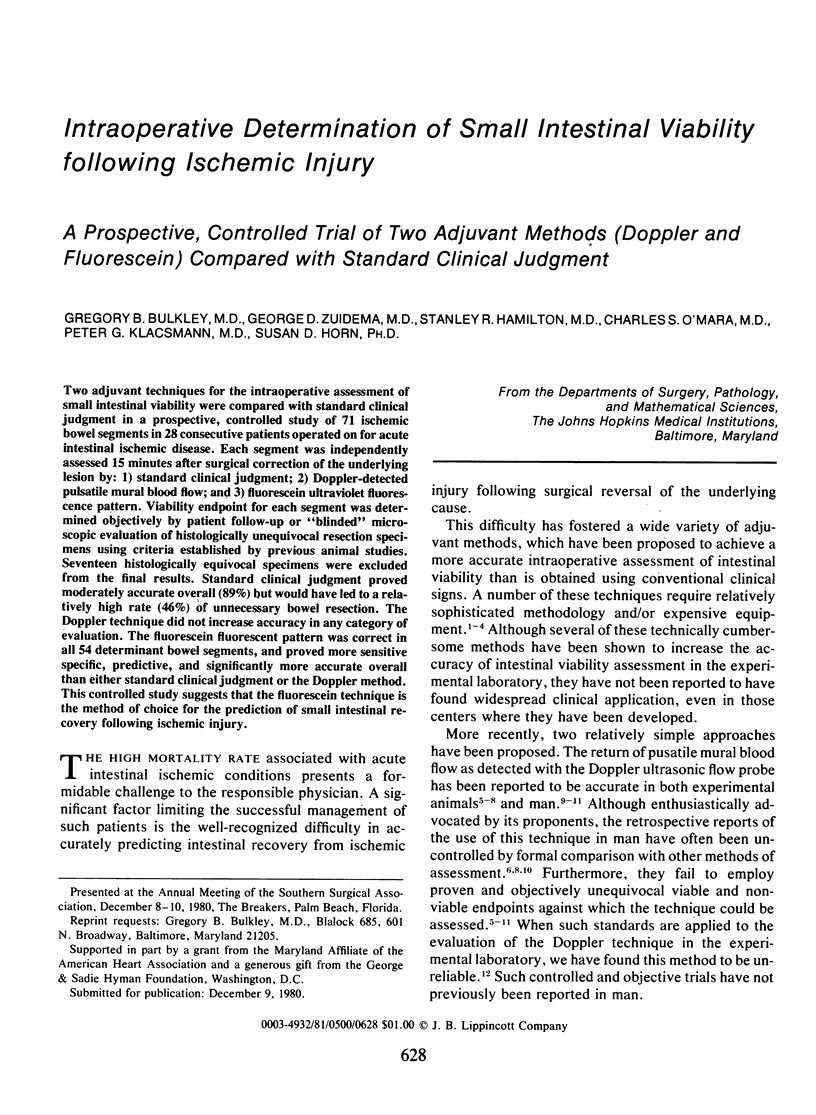
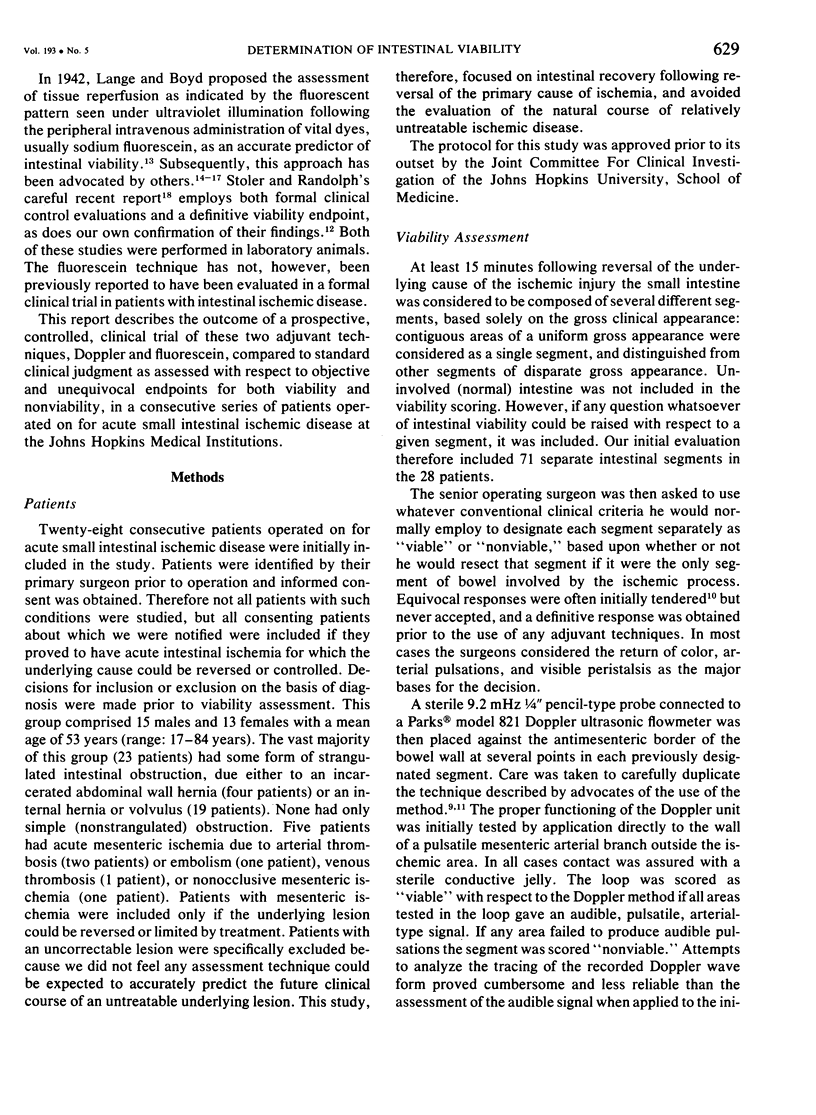
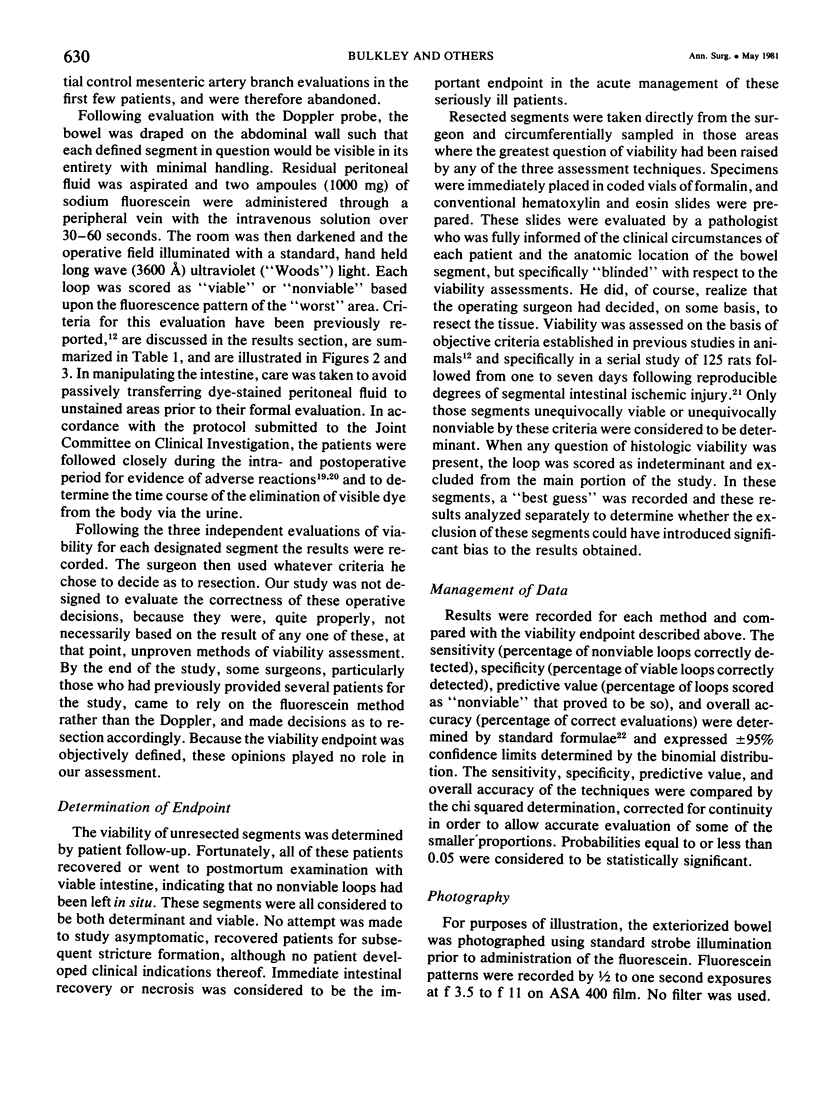
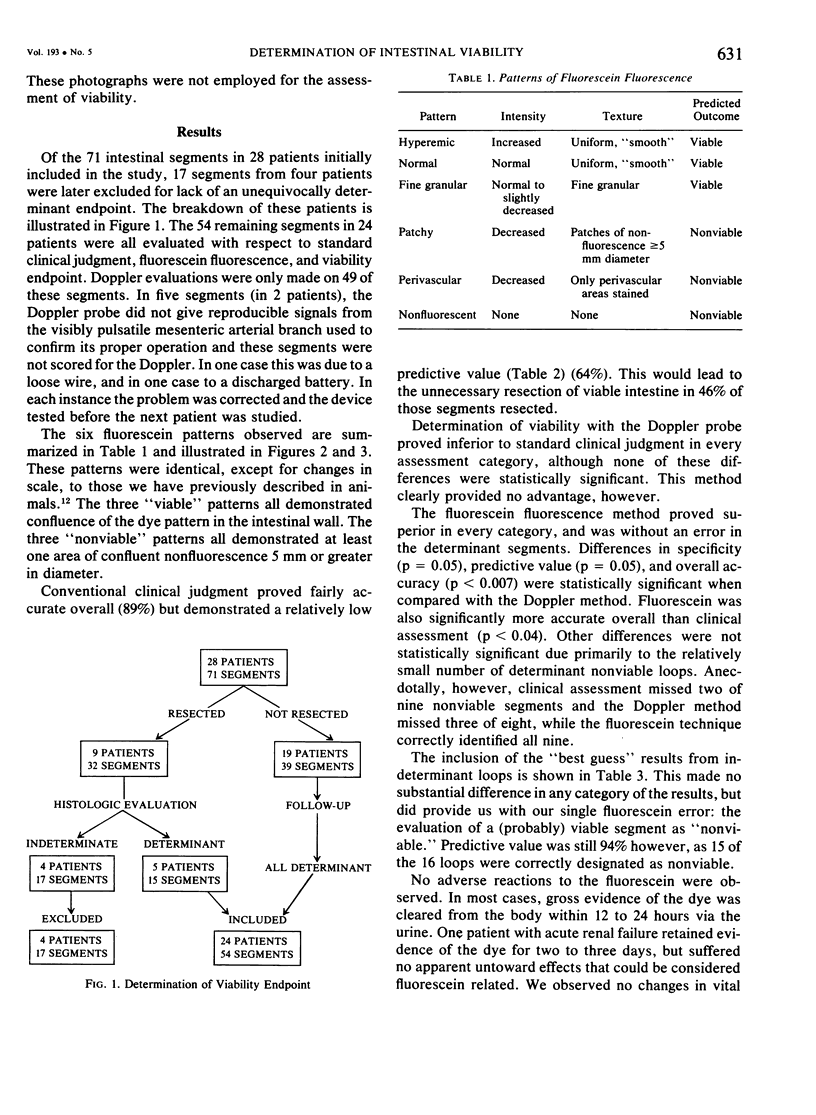
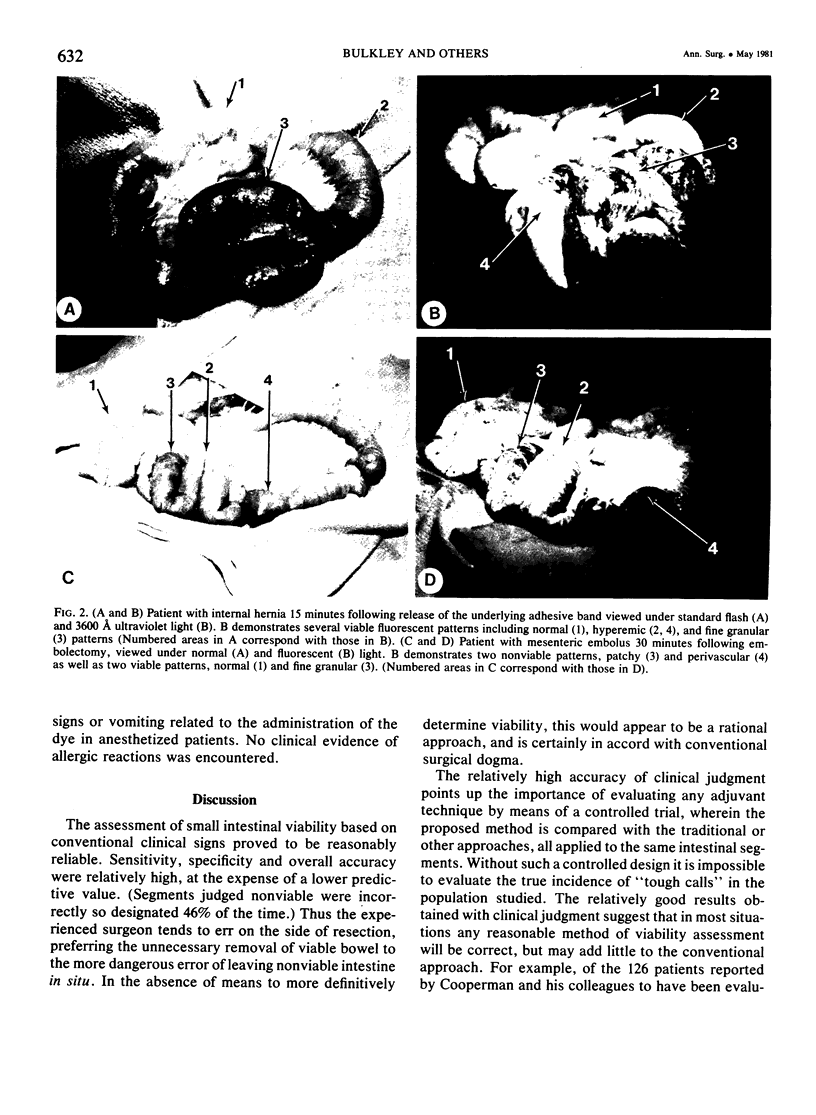
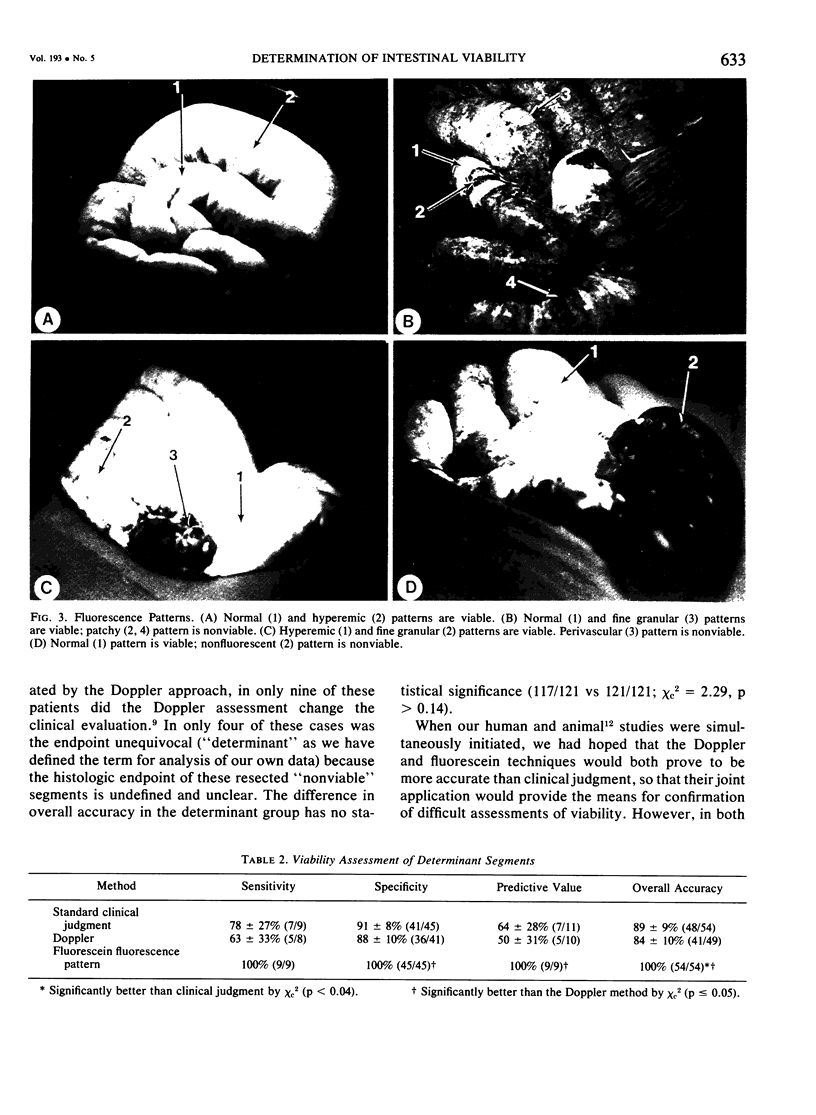
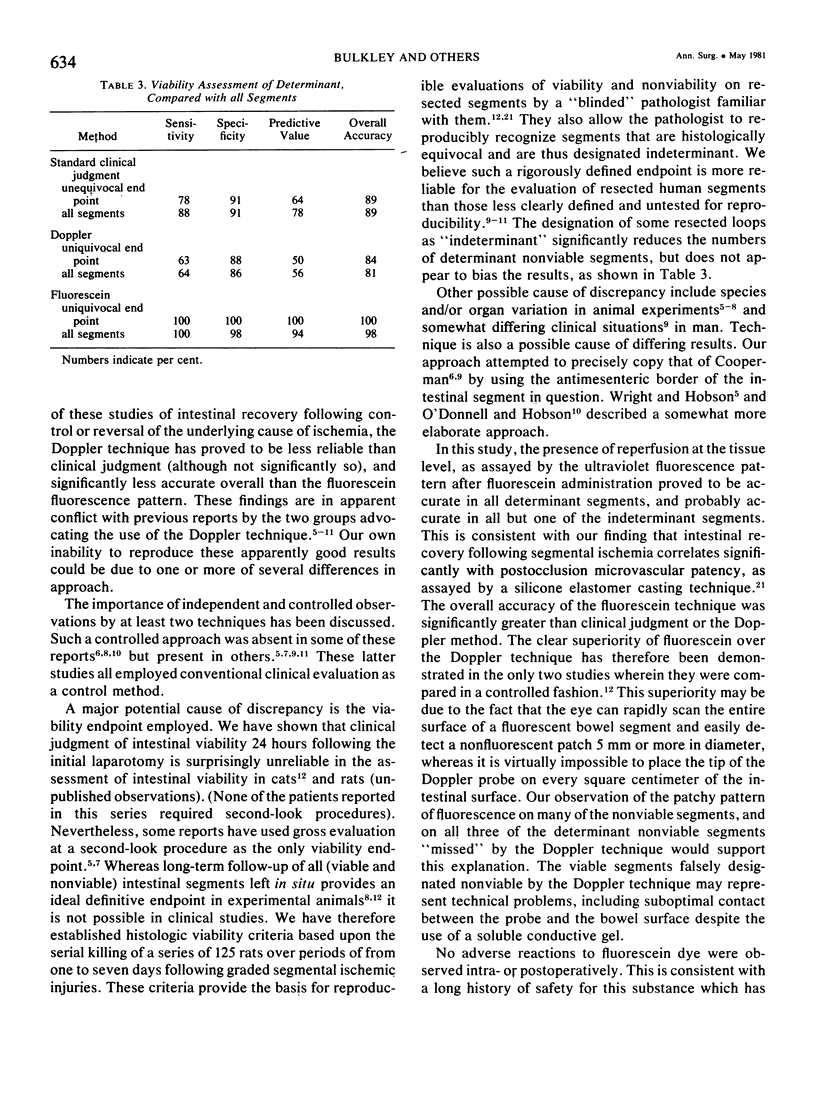
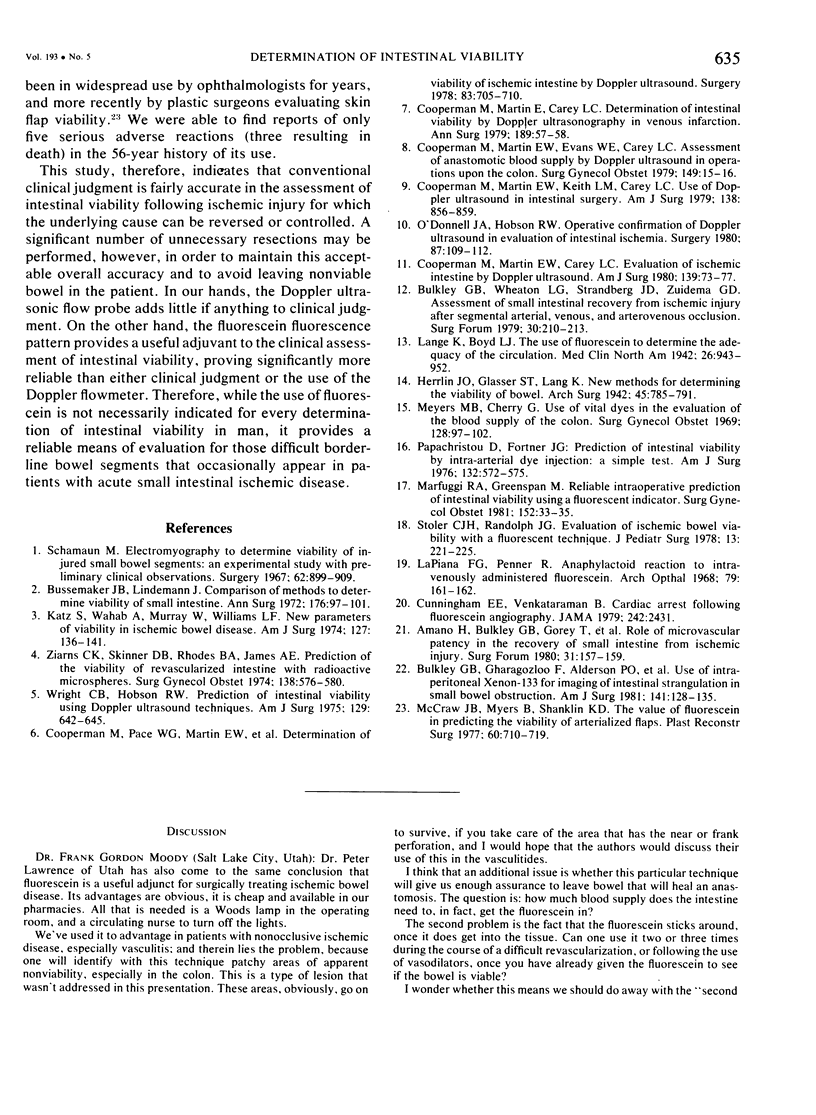
Images in this article
Selected References
These references are in PubMed. This may not be the complete list of references from this article.
- Bulkley G. B., Gharagozloo F., Alderson P. O., Horn S. D., Zuidema G. D. Use of intraperitoneal xenon- 133 for imaging of intestinal strangulation in small bowel obstruction. Am J Surg. 1981 Jan;141(1):128–135. doi: 10.1016/0002-9610(81)90025-8. [DOI] [PubMed] [Google Scholar]
- Bulkley G. B., Wheaton L. G., Strandberg J. D., Zuidema G. D. Assessment of small intestinal recovery from ischemic injury after segmental, arterial, venous, and arteriovenous occlusion. Surg Forum. 1979;30:210–213. [PubMed] [Google Scholar]
- Bussemaker J. B., Lindeman J. Comparison of methods to determine viability of small intestine. Ann Surg. 1972 Jul;176(1):97–101. doi: 10.1097/00000658-197207000-00017. [DOI] [PMC free article] [PubMed] [Google Scholar]
- Cooperman M., Martin E. W., Jr, Carey L. C. Evaluation of ischemic intestine by Doppler ultrasound. Am J Surg. 1980 Jan;139(1):73–77. doi: 10.1016/0002-9610(80)90232-9. [DOI] [PubMed] [Google Scholar]
- Cooperman M., Martin E. W., Jr, Evans W. E., Carey L. C. Assessment of anastomotic blood supply by Doppler ultrasound in operations upon the colon. Surg Gynecol Obstet. 1979 Jul;149(1):15–16. [PubMed] [Google Scholar]
- Cooperman M., Martin E. W., Jr, Keith L. M., Carey L. C. Use of Doppler ultrasound in intestinal surgery. Am J Surg. 1979 Dec;138(6):856–859. doi: 10.1016/0002-9610(79)90311-8. [DOI] [PubMed] [Google Scholar]
- Cooperman M., Pace W. G., Martin E. W., Jr, Pflug B., Keith L. M., Jr, Evans W. E., Carey L. C. Determination of viability of ischemic intestine by Doppler ultrasound. Surgery. 1978 Jun;83(6):705–710. [PubMed] [Google Scholar]
- Cunningham E. E., Balu V. Cardiac arrest following fluorescein angiography. JAMA. 1979 Nov 30;242(22):2431–2431. [PubMed] [Google Scholar]
- Katz S., Wahab A., Murray W., Williams L. F. New parameters of viability in ischemic bowel disease. Am J Surg. 1974 Feb;127(2):136–141. doi: 10.1016/0002-9610(74)90149-4. [DOI] [PubMed] [Google Scholar]
- LaPiana F. G., Penner R. Anaphylactoid reaction to intravenously administered fluorescein. Arch Ophthalmol. 1968 Feb;79(2):161–162. doi: 10.1001/archopht.1968.03850040163009. [DOI] [PubMed] [Google Scholar]
- Marfuggi R. A., Greenspan M. Reliable intraoperative prediction of intestinal viability using a fluorescent indicator. Surg Gynecol Obstet. 1981 Jan;152(1):33–35. [PubMed] [Google Scholar]
- McCraw J. B., Myers B., Shanklin K. D. The value of fluorescein in predicting the viability of arterialized flaps. Plast Reconstr Surg. 1977 Nov;60(5):710–719. doi: 10.1097/00006534-197711000-00006. [DOI] [PubMed] [Google Scholar]
- Myers M. B., Cherry G. Use of vital dyes in the evaluation of the blood supply of the colon. Surg Gynecol Obstet. 1969 Jan;128(1):97–102. [PubMed] [Google Scholar]
- O'Donnell J. A., Hobson R. W., 2nd Operative confirmation of Doppler ultrasound in evaluation of intestinal ischemia. Surgery. 1980 Jan;87(1):109–112. [PubMed] [Google Scholar]
- Papachristou D., Fortner J. G. Prediction of intestinal viability by intra-arterial dye injection: a simple test. Am J Surg. 1976 Nov;132(5):572–574. doi: 10.1016/0002-9610(76)90344-5. [DOI] [PubMed] [Google Scholar]
- Schamaun M. Electromyography to determine viability of injured small bowel segments: an experimental study with preliminary clinical observations. Surgery. 1967 Nov;62(5):899–909. [PubMed] [Google Scholar]
- Stolar C. J., Randolph J. G. Evaluation of ischemic bowel viability with a fluorescent technique. J Pediatr Surg. 1978 Jun;13(3):221–225. doi: 10.1016/s0022-3468(78)80390-x. [DOI] [PubMed] [Google Scholar]
- Wright C. B., Hobson R. W., 2nd Prediction of intestinal viability using Doppler ultrasound technics. Am J Surg. 1975 Jun;129(6):642–645. doi: 10.1016/0002-9610(75)90337-2. [DOI] [PubMed] [Google Scholar]
- Zarins C. K., Skinner D. B., Rhodes B. A., James A. E., Jr Prediction of the viability of revascularized intestine with radioactive microspheres. Surg Gynecol Obstet. 1974 Apr;138(4):576–580. [PubMed] [Google Scholar]




